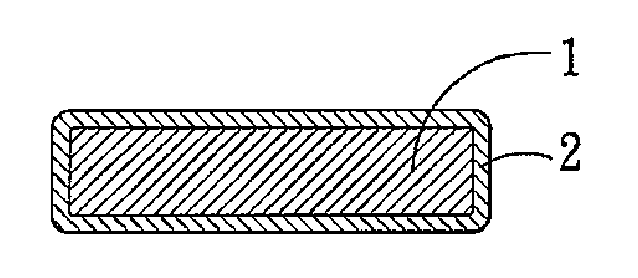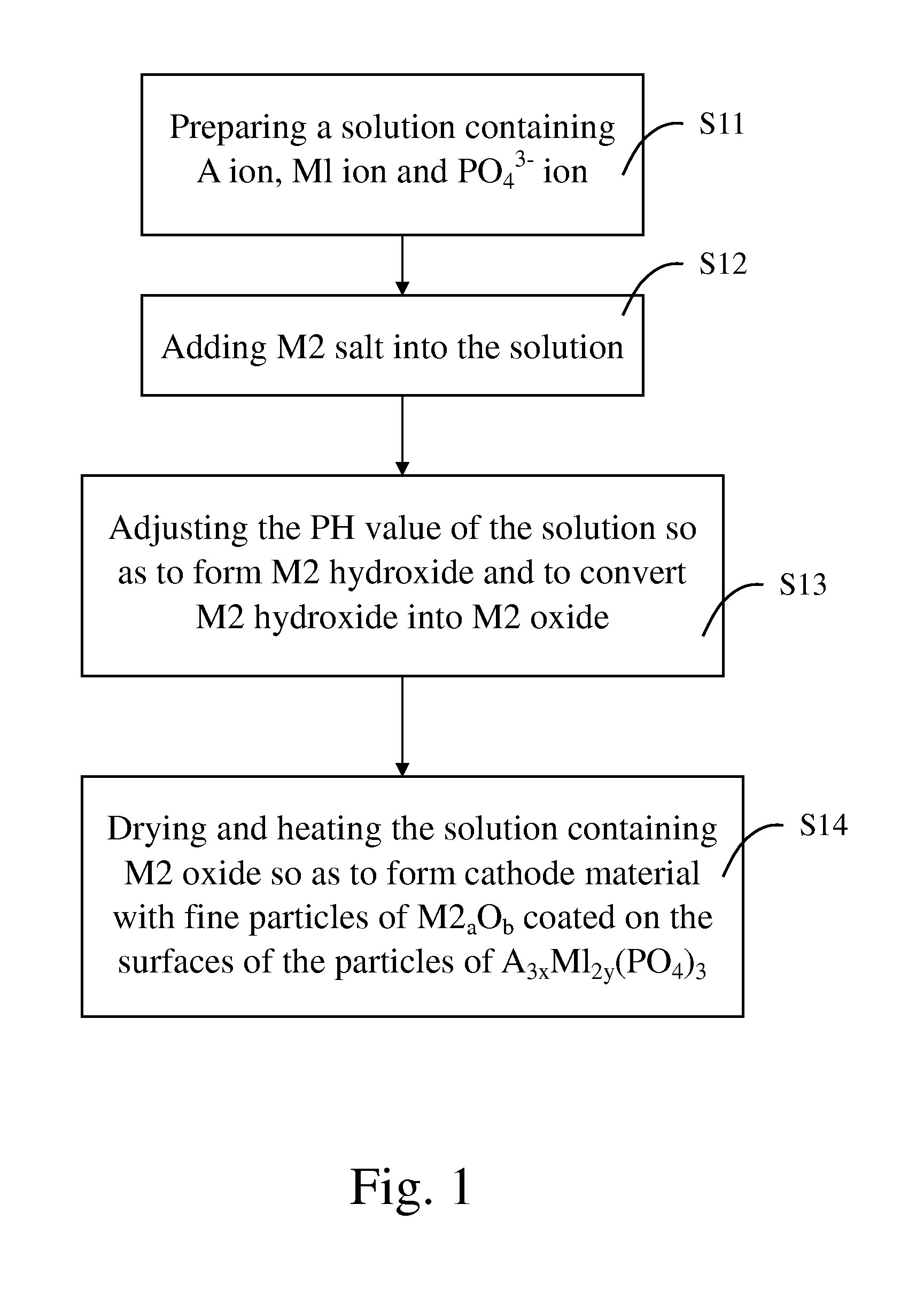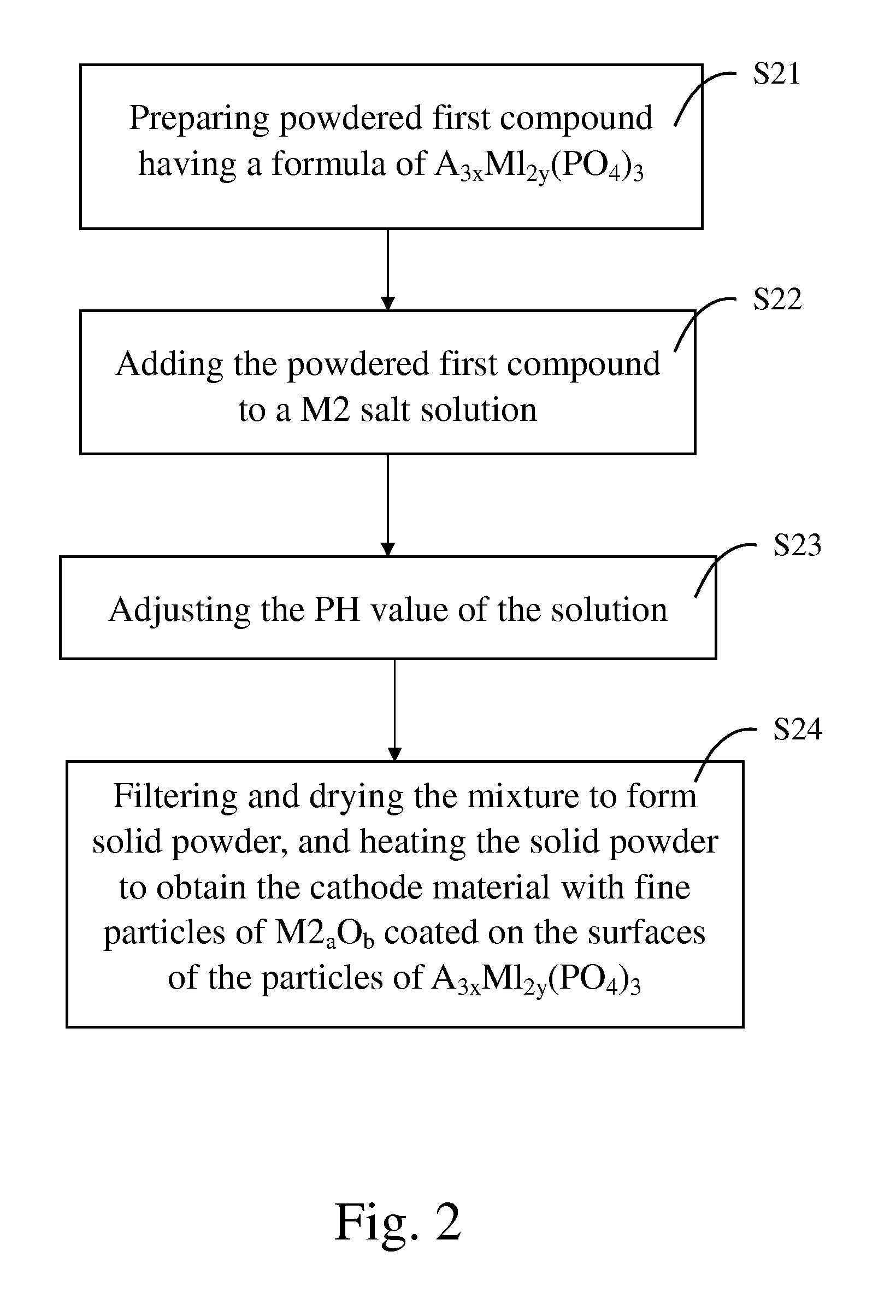Cathode material for manufacturing rechargeable battery
- Summary
- Abstract
- Description
- Claims
- Application Information
AI Technical Summary
Benefits of technology
Problems solved by technology
Method used
Image
Examples
example a
[0050] 4,050 g of phosphoric acid and 625 g of citric acid were mixed and dissolved in 15 liters of deionized water to form an acidic solution. 1,080 g of iron powders were added into and dissociated in the acidic solution so as to form ferric phosphate and ferrous phosphate in the acidic solution. After the iron powders were dissociated completely, 485 g of zinc chloride was added into and dispersed in the acidic solution with agitation by a mixer.
[0051] 1,500 g of lithium hydroxide was dissolved in 15 liters of water so as to form a basic solution. The basic solution was then added into the acidic solution. The PH value of the combined solution was adjusted to 8.5 through addition of ammonia water. By this time, zinc chloride was dissociated to form zinc hydroxide (Zn(OH2) due to neutralization. In addition, since neutralization is an exothermic reaction, zinc hydroxide thus formed was subsequently converted to zinc oxide (ZnO) by the heat generated from the neutralization.
[0052...
example b
[0056] 2,880 g of phosphoric acid and 313 g of citric acid were mixed and dissolved in 10 liters of deionized water to form an acidic solution. 1,396 g of iron powders were added into and dissociated in the acidic solution so as to form ferric phosphate and ferrous phosphate. Addition of citric acid can accelerate dissociation of the iron powders and formation of ferric phosphate and ferrous phosphate. 1,049 g of lithium hydroxide was dissolved in 10 liters of water so as to form a non-acidic solution. The non-acidic solution was then added into the acidic solution. The combined solution was subsequently spray-dried to form fine powders.
[0057] The fine powders were placed in an alumina crucible and the crucible was placed in a furnace chamber. Temperature of the furnace chamber was raised to 700° C. by a rate of 5° C. / min, and the fine powders were maintained at 700° C. under a nitrogen environment for 8 hours. Powdered lithium ferrous phosphate was formed.
[0058] 1.4 g of zinc chl...
example c
[0063] 11.5 g of phosphoric acid, 1 g of citric acid, and 1 g of sucrose were dissolved in 100 ml of deionized water to form an acidic solution. 5.6 g of iron powders were added into and dissociated in the acidic solution so as to form ferric phosphate and ferrous phosphate. After the iron powders were completely dissociated, 0.72 g of copper nitrate was added into and mixed with the acidic solution. 4.2 g of lithium hydroxide was dissolved in 100 ml of water so as to form a non-acidic solution which was then added into the acidic solution to conduce neutralization. By this time, the pH value of the combined solution was slightly lower than 7. Then, the pH value of the combined solution was adjusted to about 8 through addition of ammonia water. The combined solution was dried after mixing so as to form fine powders. The fine powders were placed in an alumina crucible and the crucible was placed in a furnace chamber where carbon powders were placed. Temperature of the furnace chamber...
PUM
 Login to View More
Login to View More Abstract
Description
Claims
Application Information
 Login to View More
Login to View More - R&D
- Intellectual Property
- Life Sciences
- Materials
- Tech Scout
- Unparalleled Data Quality
- Higher Quality Content
- 60% Fewer Hallucinations
Browse by: Latest US Patents, China's latest patents, Technical Efficacy Thesaurus, Application Domain, Technology Topic, Popular Technical Reports.
© 2025 PatSnap. All rights reserved.Legal|Privacy policy|Modern Slavery Act Transparency Statement|Sitemap|About US| Contact US: help@patsnap.com



